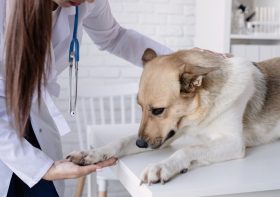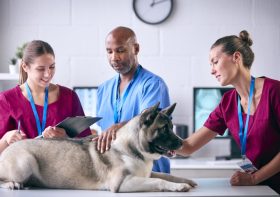Is Anesthesia Safe for My Pet’s Dentistry?

As a caring pet owner, the health and wellbeing of your furry friend is always a top priority, especially when it comes to medical procedures. Just like humans, pets can require dental care, which often involves anesthesia to ensure a safe and pain-free experience. The thought of our pets going under can be unsettling, but understanding the safety and precautions taken during these procedures can put your mind at ease. In this article, we’ll discuss the ins and outs of anesthesia for your pet’s dentistry and whether or not it’s a safe option.
The Essential Role of Anesthesia in Pet Dentistry
The short answer is yes; anesthesia is both necessary and generally safe for pet dentistry. It is a critical component that allows veterinary professionals to perform dental procedures with precision without causing stress or pain to your pet. Moreover, while there are always risks associated with anesthesia, modern veterinary practices have made significant advancements in monitoring and administering anesthesia safely.
Dental Care and Anesthesia in Pets
Dental health in pets is not just about clean teeth and fresh breath; it’s an essential aspect of their overall well-being. Poor dental hygiene can lead to significant health issues, including heart disease, liver disease, and kidney infections. Professional cleanings and certain dental procedures require your pet to be still for an extended period, which is where anesthesia comes in. It immobilizes your pet safely so the vet or veterinary surgeon in Villa Rica can thoroughly assess and treat dental conditions.
Assessing the Risks of Anesthesia
Before any anesthetic procedure, veterinarians perform a thorough evaluation of the pet’s health. This typically involves:
-
A complete physical examination
-
A review of the pet’s medical history
-
Blood tests to assess organ function and suitability for anesthesia
This pre-assessment helps identify any underlying issues that could increase the risk of complications during anesthesia. Moreover, anesthesia today is tailored to the individual animal, taking into consideration factors like age, breed, health status, and the type of procedure being performed.
Advancements in Anesthetic Protocols
Advancements in veterinary medicine have led to the development of safer anesthetic agents and protocols. Vets now have access to a variety of anesthetics, allowing them to choose the one best suited to your pet’s needs. During the dental procedure, your pet’s vital signs, including heart rate, oxygen levels, blood pressure, and respiration, are closely monitored by trained veterinary technicians to identify and respond to any changes quickly.
Preparing Your Pet for Dental Anesthesia
To ensure the safety of your pet during the dental procedure, there are several steps you can take:
-
Maintain up-to-date health records and share any recent changes in your pet’s behavior or health with the veterinarian.
-
Follow your vet’s instructions about fasting your pet before anesthesia to decrease the risk of complications.
-
Discuss your concerns and any previous experiences your pet has had with anesthesia.
All these preparations contribute to a safer anesthetic experience for your furry friend.
Post-Anesthesia Care for Your Pet
After the dental procedure, your pet will need some time to recover from the anesthesia. They may be groggy and disoriented. It is crucial to keep them warm, comfortable, and away from stairs or potential hazards until they’re fully alert. Your vet will provide specific post-procedure care instructions, which may include tips on diet, rest, and medication management.
Regular Veterinary Care
Incorporating regular dental check-ups into your pet’s healthcare routine can minimize the likelihood of requiring invasive dental procedures that would entail anesthesia. Moreover, vaccinations play an important role in preventative care. Villa Rica pet vaccination programs can protect your pet from various diseases, further reducing the potential complications associated with a compromised immune system during dental treatments.
Choosing the Right Veterinary Dental Care
When it comes to your pet’s dental needs – and anesthesia in particular – selecting the right veterinary team is critical. A well-qualified team ensures that best practices are followed in administering anesthesia and dental care. When considering dental services, ask questions about:
-
The vet’s experience with dental procedures and anesthesia
-
Their monitoring equipment and protocols during anesthesia
-
The type of anesthesia and pain management used
-
How they handle emergencies should they arise
-
Pre and post-dental care instructions
These queries will help you gauge the level of care your pet will receive.
Regular dental cleanings are also crucial in preventing the need for more complicated procedures. By investing in Villa Rica canine dental care, you can ensure better oral and overall health for your pooch, lessening the need for anesthesia and ensuring safe usage when necessary.
The Path Forward
We’ve tackled the safety of anesthesia in the context of pet dentistry and the efforts taken by veterinarians to minimize risks. It’s clear that while anesthesia is not entirely without risks when managed correctly, it is generally safe for your pet’s dental procedures. Understanding the importance of good oral health, regular check-ups, and the role of a professional veterinary team can make all the difference in your pet’s dental care experience. So, you can rest easier knowing that with proper precautions, dental anesthesia is a tool that can significantly improve your pet’s quality of life without compromising their safety.
Final Thoughts
Maintaining your pet’s pearly whites isn’t just about vanity – it’s a key factor in their overall health, and anesthesia is a small yet significant part of that maintenance. By working closely with a trusted vet, asking the right questions, and taking proper care, you’re making responsible choices for your pet’s healthcare journey. So, while the thought of anesthesia may initially be a concern, it’s reassuring to know that our furry friends are in good hands with current veterinary dental practices.


